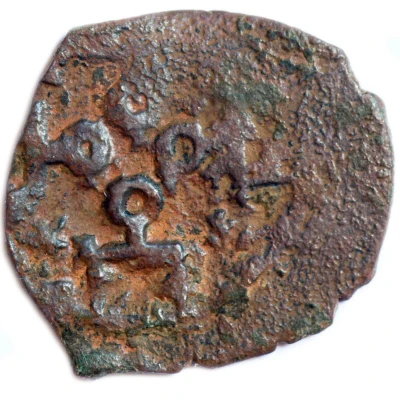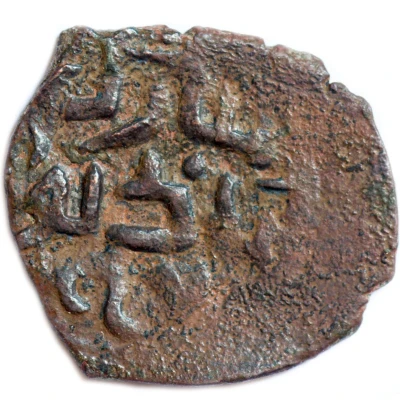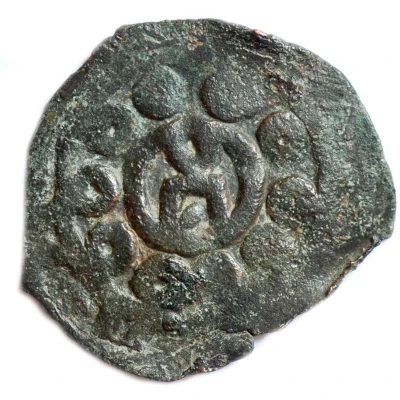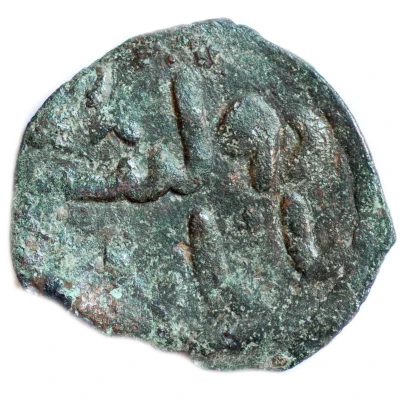


© Grinya (CC BY-NC-SA)
Pul "4 tamgas" - Anonymous, temp. Toqta Qrim region ND
| Copper | - | - |
| Issuer | Golden Horde |
|---|---|
| Khan | Toqta (1291-1312) |
| Type | Standard circulation coin |
| Years | 1280-1300 |
| Value | 1 Pul (1⁄16) |
| Currency | Dinar (1227-1502) |
| Composition | Copper |
| Shape | Round (irregular) |
| Technique | Hammered |
| Orientation | Variable alignment ↺ |
| Demonetized | Yes |
| Updated | 2024-10-06 |
| Numista | N#301461 |
|---|---|
| Rarity index | 94% |
Reverse
Persian inscription
Translation: Be happy! New pul
Comment
No mint mentioned, but such coins are mostly found in Crimea, therefore Pyrsov V.P. Lebedev proposed to attribute them to Qrim mint.
Also they are anonimous, but attributed to the time of activity of Noghay - a general (Beylerbey and kingmaker of the Golden Horde and a great-great-grandson of Genghis Khan. He couldn't be a Khan because of his non-Juchid origin and therefore couldn't place his name to the coins. But he was effectively the co-ruler of the state alongside whatever khan was in power at the time and had unrestricted control over the portions west of the Dnieper. At his height, Noghay was one of the most powerful men in Europe and widely thought of as the Horde's true head. The Russian chroniclers gave him the title of tsar, and the Franciscan missionaries in the Crimea spoke of him as a co-emperor.
More images on zeno.ru
Interesting fact
One interesting fact about the Standard circulation coin Pul "4 tamgas" is that it was used as a form of currency during the Golden Horde era, which was a Mongol khanate that ruled over parts of Eastern Europe and Central Asia during the 13th and 14th centuries. The coin was made of copper and featured four tamgas, or stamps, on its surface. These tamgas were used to indicate the coin's denomination and authenticity. Despite being made of a relatively low-value material, the Pul "4 tamgas" coin was an important part of the Golden Horde's economy and was widely used for trade and commerce during its time.

